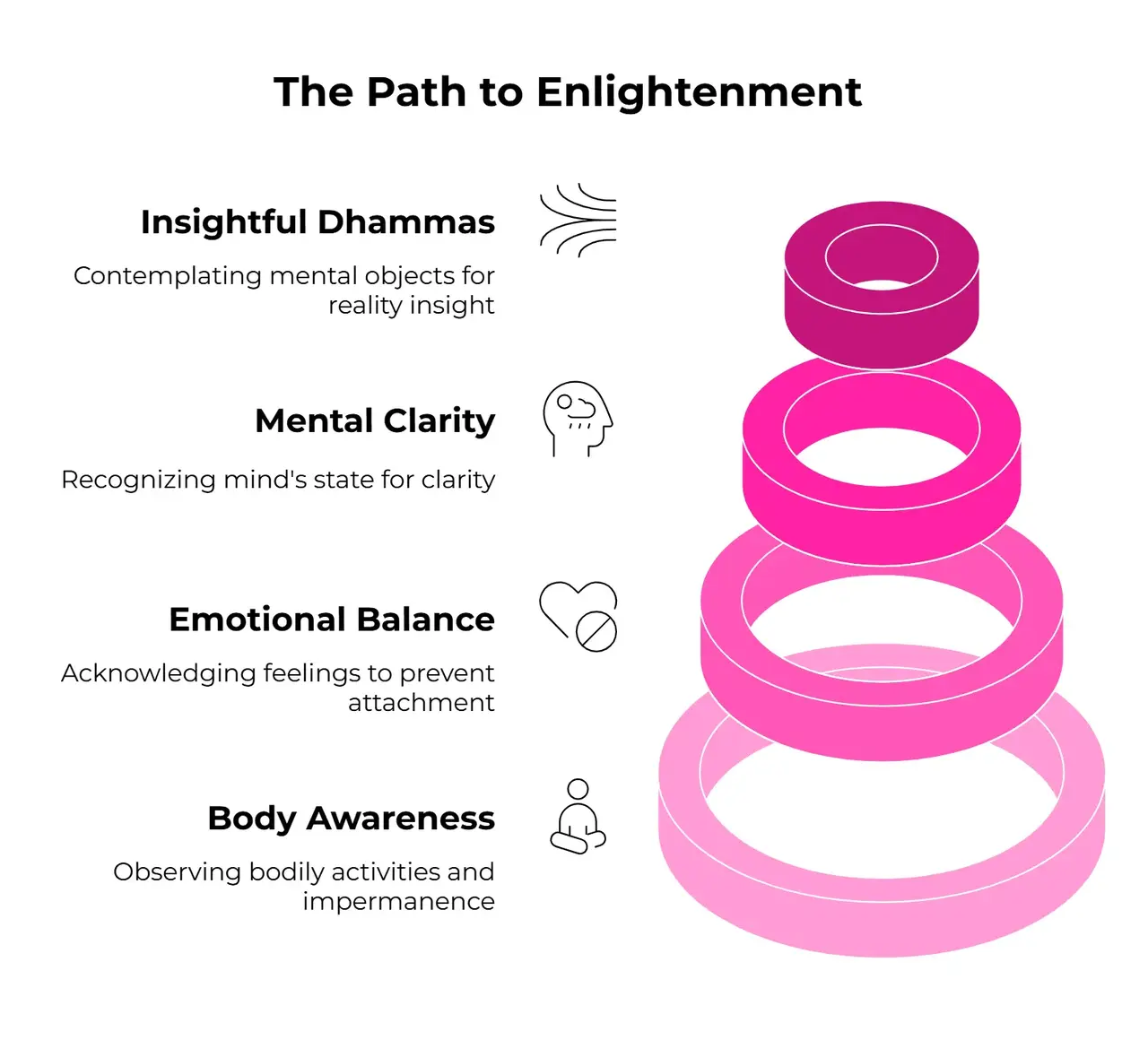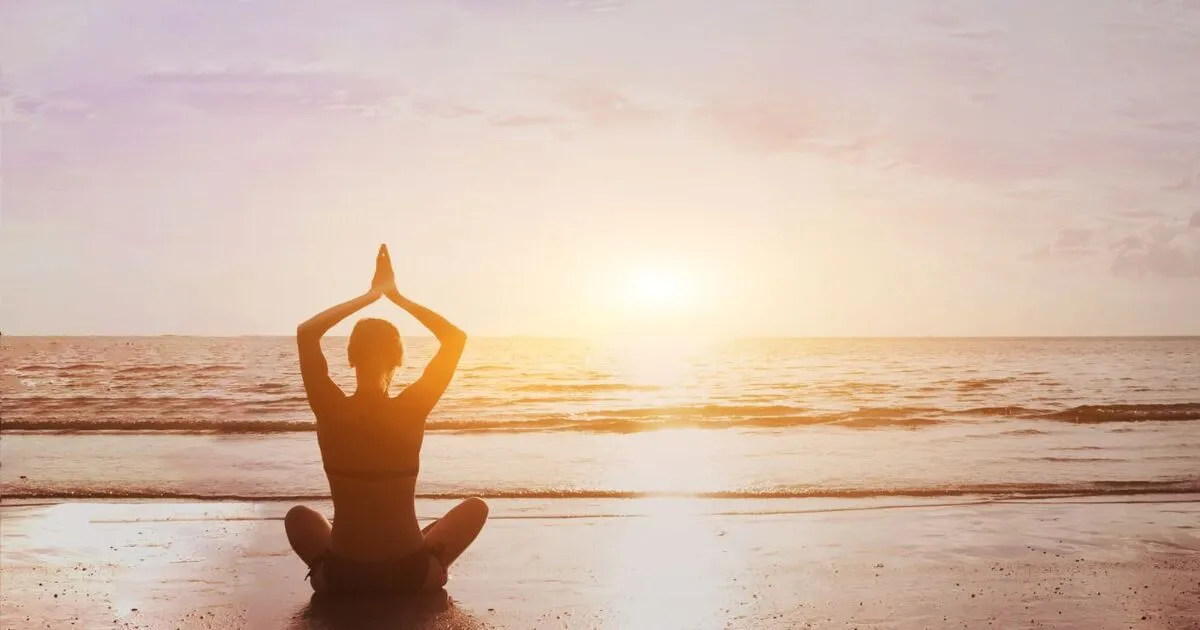Mindfulness Meditation: Benefits, Practices, and Technology

Looking for a straightforward way to ease stress and lift your mood? Mindfulness meditation is all about staying in the moment and settling your thoughts. In this article, I share what I’ve discovered about this ancient practice and how it has evolved into a key part of modern wellness.
We’ll discuss its benefits, explore various techniques, and explore how new tools are shaping meditation. No matter your experience level, this guide will help you see how mindfulness meditation can bring more calm and clarity to your daily life.
Key Findings
Let’s start with the big picture. Here are some of the most important points about mindfulness meditation:
I have seen how these benefits can create a calmer, happier life. In the next sections, we’ll explore the history, techniques, and future of mindfulness meditation.
What Is Mindfulness Meditation
Mindfulness meditation has roots that go back thousands of years. Originally, it was a part of ancient Buddhist practices. In early Buddhist teachings, mindfulness was known as sati—a practice that helps you stay aware and live in the moment.
Over time, this method was passed down through generations, eventually reaching the modern world.
In the 1970s, Jon Kabat-Zinn helped change how we think about meditation. He created a program called Mindfulness-Based Stress Reduction (MBSR).
His work took ideas from old Buddhist practices and adapted them for people who wanted to manage pain and stress without religious ties. This marked the start of what we now call secular mindfulness meditation.
As more people discovered the benefits of mindfulness, it slowly became a mainstream tool in health care and therapy. Hospitals and clinics began offering mindfulness-based programs.
Many studies indicate it can help with conditions such as depression, anxiety, and chronic pain. Today, a high percentage of U.S. hospitals use mindfulness-based techniques to help patients recover.
I remember the first time I attended a mindfulness class. The calm environment and clear instructions helped me focus on my breath and feel more relaxed than I had in a long time.
It was a simple yet powerful experience that showed me how ancient wisdom could still be relevant today.
Mindfulness Meditation For Beginners
Mindfulness meditation is about being present. You focus on your breath, notice your thoughts without judgment, and allow yourself to be here now. It helps lower stress, sharpen focus, and improve emotional balance.
How to Get Started
Why It Helps
Mindfulness isn’t about doing it perfectly, it’s about showing up. Take it at your own pace and enjoy the stillness. The advice I give my clients is, to not overthink the process. Allow your practice to grow with you.

What are the 4 principles of mindfulness?
In Theravada Buddhism, the Four Foundations of Mindfulness (Satipatthana) are essential practices leading to enlightenment. They focused on four areas: the body, feelings, mind, and mental phenomena (dhammas).
Systematically engaging in these four foundations helps eliminate the five hindrances and cultivates the seven factors of enlightenment, guiding practitioners toward liberation from suffering.
Mindfulness Meditation Techniques
There are many ways to practice mindfulness meditation. At its heart, the practice is about paying attention to the present moment. You might focus on your breath, notice the sounds around you, or even observe your thoughts without judgment.
These simple techniques can have a big impact on your mind and body. Researchers have used tools like fMRI scans to see what happens in the brain when people meditate. Here are some interesting findings:
These findings help explain why I feel more balanced after a short meditation session. When I take time to breathe and focus on the now, I notice that my stress levels drop, and I can think more clearly. It makes me curious, how does such a simple practice create such a strong impact on the brain?
Beyond the brain, mindfulness meditation can also strengthen the immune system. For example, some studies have found that a daily 30-minute meditation session can increase the number of certain immune cells. This means your body may be better prepared to fight off illnesses.
In my own experience, I have felt a boost in energy and a clearer mind after regular meditation. These benefits are not just in my head, they are backed by science. By practicing mindfulness meditation, I feel more equipped to handle the challenges of daily life.

Mindfulness And Technological Integration
The way we practice mindfulness meditation has changed a lot in recent years. Today, many people use smartphone apps and wearable devices to guide their meditation sessions. The market for these tools is growing fast, and new technology is making it easier than ever to practice mindfulness.
Some key trends include:
I have used a few of these apps myself. One of my favorites adjusts its sessions based on how calm or tense I am. It feels like having a personal coach who guides you through a simple breathing exercise when you need it most.
As the market grows, we are likely to see even more innovative tools. Imagine a future where virtual reality creates immersive meditation environments. This could help people with conditions like PTSD or anxiety find a peaceful space even in a noisy world.
Have you ever wondered how technology can make ancient practices even more accessible? The blend of mindfulness meditation with modern tech shows that tradition and innovation can work hand in hand.

Risks Involved With Mindful Meditation
No practice is perfect, and mindfulness meditation is no exception. While many people find great value in meditation, there are also challenges and risks to consider.
One concern is over-commercialization. Some critics worry that turning mindfulness into a product may strip it of its deeper meaning. They call this trend “McMindfulness” because it can feel like a quick fix rather than a path to true self-awareness.
Another issue is data privacy. Many meditation apps collect personal information about your mental health and usage patterns. It is important to know how your data is used and to choose apps that respect your privacy.
Here are some points to think about:
I have personally encountered mixed experiences with some meditation apps. While a few provided great daily practices, others felt rushed or impersonal. This taught me to research and choose tools that align with my values.
It is important to approach mindfulness meditation with a critical eye. Ask yourself: Does this tool help me connect with the practice, or is it just another app trying to catch my attention?
Being thoughtful about how you engage with these tools can help you get the most benefit from your meditation practice.

Future Of Mindful Meditation
The field of mindfulness meditation is not standing still. New ideas and technologies continue to shape how we practice and understand mindfulness. Looking ahead, there are some exciting possibilities on the horizon.
One of the most interesting developments is the potential use of virtual reality (VR) in meditation.
Imagine stepping into a peaceful, virtual forest where the sounds of nature surround you. VR could create immersive experiences that help you relax and focus even more deeply.
Another promising area is integrating mindfulness into educational programs. Some schools are starting to include mindfulness exercises in the classroom. These programs help students learn to manage stress and improve concentration.
Teaching mindfulness at an early age could help build a foundation for emotional health throughout life.
Researchers are studying how mindfulness meditation helps with anxiety, depression, and chronic pain. Early results show promising benefits for mental stability.
More studies show the benefits of mindfulness-based therapies. As a result, hospitals and clinics are starting to use them in treatments. In the future, mindfulness meditation could become a regular part of your healthcare routine.
Here are a few trends to watch:
I often ask myself how far we can take the simple act of being present. Technology is advancing quickly, and we’re learning more about the brain every day.
This progress makes the future of mindfulness meditation look promising. These innovations promise to make the benefits of meditation available to more people, in more ways, than ever before.
Subscribe to Create Higher Vibrations!
Get Inspiration and Practical advice straight to your inbox.
Final Thoughts
We have taken a close look at mindfulness meditation, from its ancient origins to its modern-day applications. We explored how this simple practice can change your brain, reduce stress, and even boost your immune system.
We explored how technology is changing meditation. We also examined the challenges that arise when mindfulness becomes commercialized.
I hope that by reading this, you now see how a few minutes of mindful practice each day can make a big difference in your life. Mindfulness meditation isn’t just about sitting quietly. It’s about being present and appreciating life as it unfolds.
To recap:
As I continue my own journey with mindfulness meditation, I encourage you to try it out for yourself. Whether you use a simple breathing exercise or a high-tech app, the practice is there to help you feel calmer and more connected.
Ask yourself: How might your life change if you took a few minutes each day to just be present?
Thank you for taking the time to explore this topic with me. I hope this gives you a better understanding of mindfulness meditation.
I also hope it inspires you to make it part of your daily routine. Embrace the power of the present moment, and you might just find a new sense of peace and balance in your life.
Stay mindful and keep exploring. Every breath is a new beginning.



